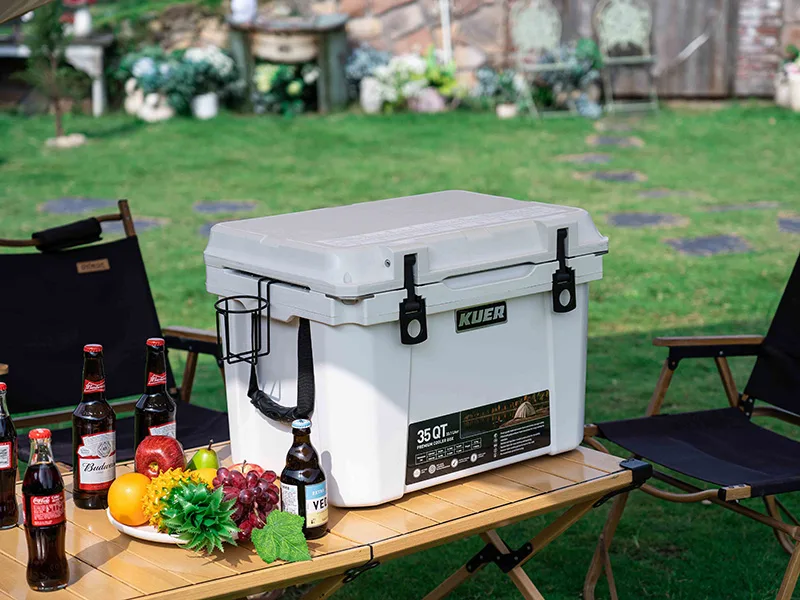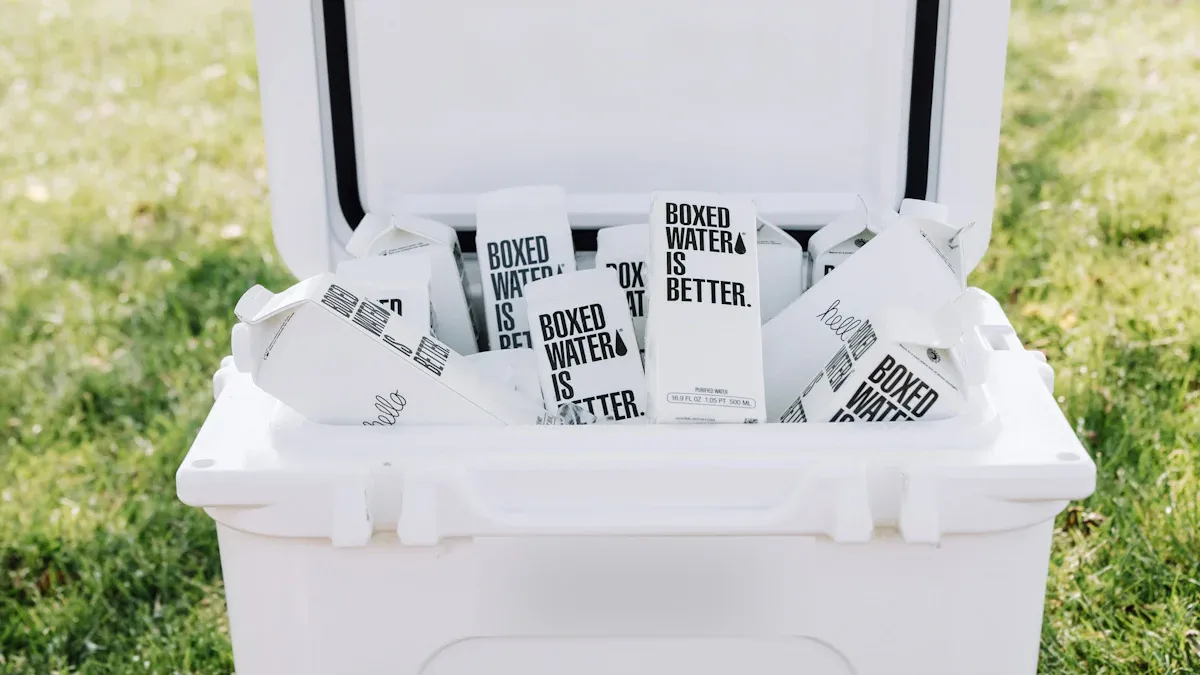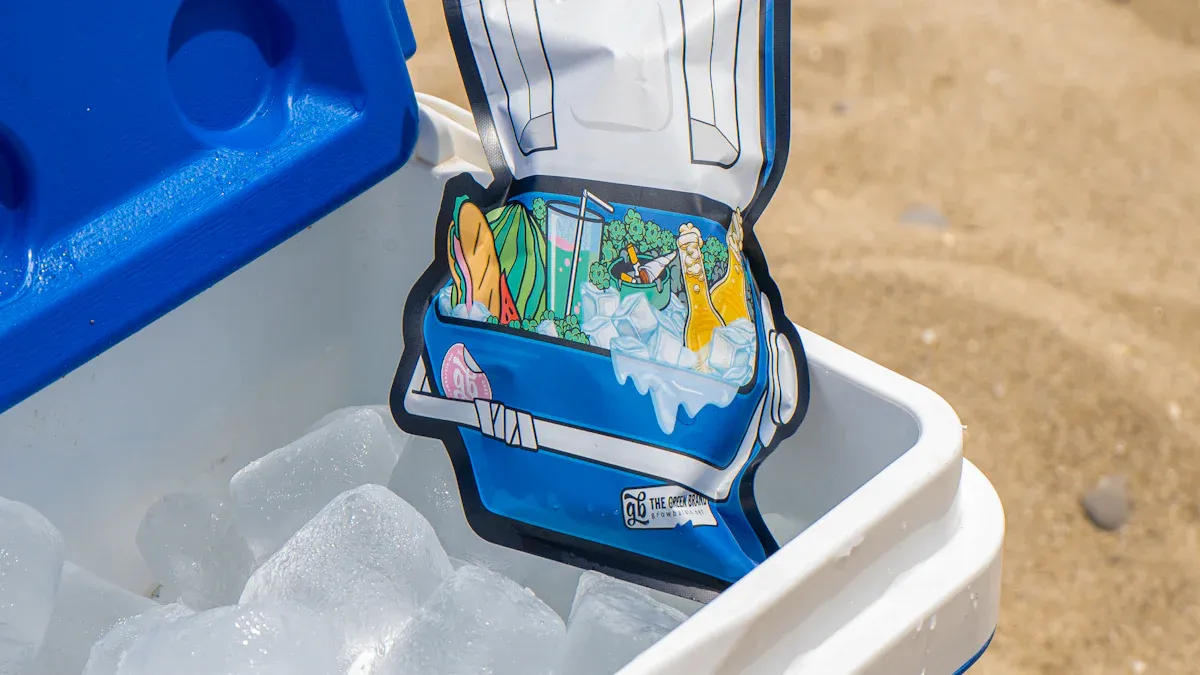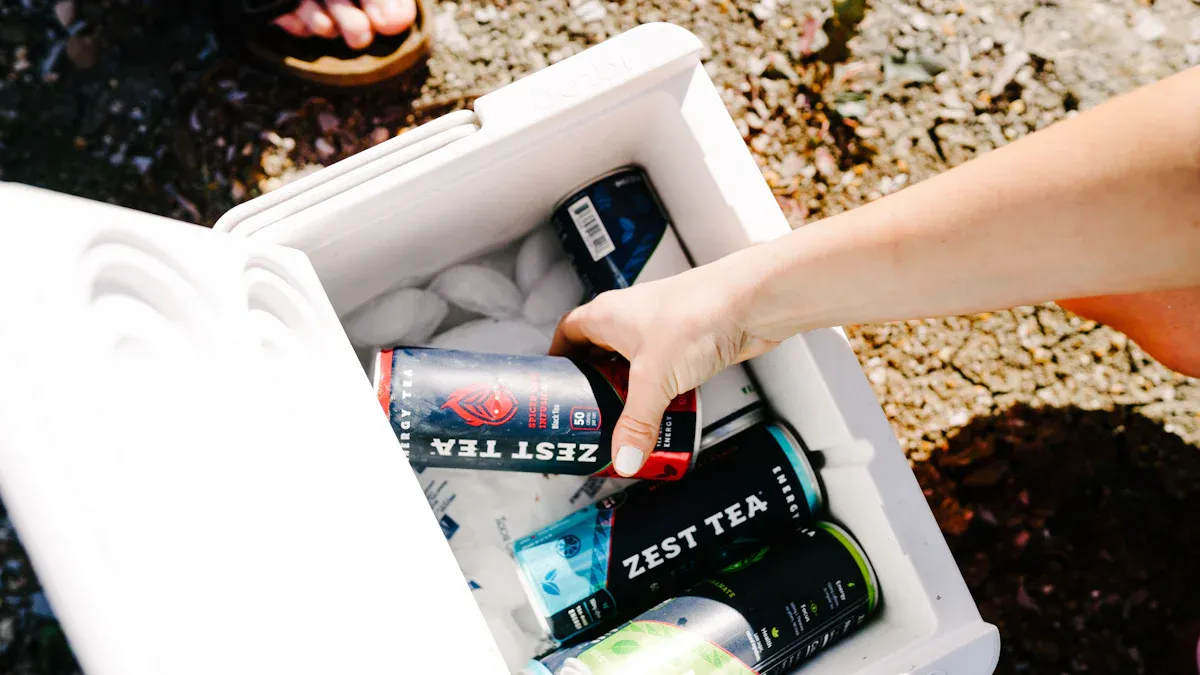

Choosing between a hard plastic lunch cooler or soft cooler box might seem tricky, but it boils down to what you need most. Do you want better insulation for your meals or something light and easy to carry? With the insulated lunch box market growing from $1.59 billion in 2023 and projected to reach $2.43 billion by 2030, it’s clear people value portability and durability. Whether you’re packing lunch for work or heading outdoors, both types offer unique benefits tailored to your lifestyle.
Kuer, one of the leading cooler box manufacturers will provide you with a variety of cooler solutions.
Key Differences Between Hard and Soft Lunch Coolers

Insulation Performance
When it comes to keeping your lunch fresh, insulation is key. Hard coolers, like the cooler lunch box hard, often outperform soft ones in ice retention. Their thick insulated walls and advanced sealing technology maintain a lower temperature for longer periods. In fact, tests show that hard coolers can retain ice for 36 to 45 hours, keeping the temperature below 40°F. On the other hand, soft coolers, such as freezable lunch boxes, typically hold ice for up to 24 hours, with temperatures ranging between 37.6°F and 45.1°F.
| Type of Cooler | Ice Retention Time | Temperature Range (°C) | Temperature Range (°F) |
|---|---|---|---|
| Cooler Bag | 24 hours | 3.1 – 7.3 | 37.6 – 45.1 |
| Cooler Box | 36 – 45 hours | < 4.4 | < 40 |
| Polystyrene Box | 23 hours | 2.02 – 7.54 | 35.6 – 45.6 |
If you’re planning a long outdoor adventure or need to store food for extended periods, a hard lunch cooler might be your best bet. But for daily use, soft coolers still provide reliable insulation for shorter durations.
Durability and Build Quality
Durability is another major factor to consider. Hard coolers are built to last. They’re made from high-density polyethylene, which makes them rugged and resistant to rough handling. Whether you’re camping in the wilderness or transporting food across bumpy terrain, hard coolers can handle it all.
Soft coolers, on the other hand, are designed for convenience. Their fabric exteriors are durable enough for everyday use but may show wear and tear over time. While they’re not as rugged as hard coolers, they’re still reliable for office lunches or casual outings.
Tip: If you need a cooler for outdoor adventures, go for a hard one. For daily use, a soft cooler offers the perfect balance of durability and portability.
Portability and Weight
Portability often depends on how you plan to transport your lunch. Soft coolers are lightweight and flexible, making them easy to carry. Many come with adjustable straps or handles, which add to their convenience. If you’re commuting to work or packing lunch for school, a soft cooler is a hassle-free option.
Hard coolers, while durable, tend to be heavier and bulkier. They’re great for group trips or situations where you don’t need to carry them far. However, they’re less ideal for solo transport or long distances.
- Soft Coolers: Lightweight, flexible, and easy to carry. Perfect for daily use.
- Hard Coolers: Heavier and bulkier but offer unmatched durability. Best for outdoor adventures.
Choosing the best lunch cooler depends on your lifestyle. If portability is your priority, a soft cooler is the way to go. But if you need something durable for rugged conditions, a hard cooler won’t let you down.
Pros and Cons of Hard and Soft Lunch Coolers
Hard Lunch Coolers
Hard lunch coolers are built for toughness. If you’re someone who loves outdoor adventures or needs reliable storage for long trips, these coolers are a solid choice. Their rigid design makes them durable, so they can handle rough conditions like bumpy rides or accidental drops. Many hard coolers use high-density polyethylene, which resists cracks and dents.
One of the biggest perks of hard coolers is their insulation. They keep ice frozen for longer periods, sometimes up to 45 hours. This means your food stays fresh even in hot weather. Hard coolers also offer plenty of storage space, making them ideal for packing meals for a group.
However, they’re not perfect for every situation. Hard coolers tend to be heavier and bulkier, which can make carrying them a hassle. If you’re looking for something portable for daily use, this might not be the best option.
Note: Hard coolers shine in durability and ice retention, but their weight and size might not suit everyone.
Soft Lunch Coolers
Soft lunch coolers are all about convenience. They’re lightweight and easy to carry, making them perfect for daily use. Whether you’re packing lunch for work or school, their flexible design fits into tight spaces like backpacks or car seats. Many soft coolers come with adjustable straps, so you can carry them comfortably.
While they don’t match the ice retention of hard coolers, soft coolers still keep food fresh for up to 24 hours. This is more than enough for most daily needs. Plus, they’re easier to clean. Reviews often praise soft coolers for their practicality, noting how simple it is to wipe down the fabric exterior after use.
Soft coolers aren’t as durable as hard ones, but they’re still reliable for everyday use. They’re less suited for rugged conditions but work well for casual outings or office lunches.
Tip: If portability and ease of use matter most to you, a soft cooler is the way to go.
Breaking Myths About Lunch Coolers
Myth 1: Hard Coolers Always Keep Food Colder
You might think a hard cooler always keeps your food colder than a soft one. It’s a common belief, but it’s not entirely true. While hard coolers often have thicker walls and better insulation, the actual performance depends on how you use them. For example, if you don’t pre-chill your hard cooler or pack enough ice, the temperature inside can rise quickly. On the other hand, a well-packed soft cooler with a freezable lunch box insert can maintain a low temperature just as effectively for shorter periods.
The key lies in the situation. If you’re heading out for a long camping trip, a hard cooler might be the better choice. But for daily lunches or short outings, a soft cooler can keep your food fresh and cold without the extra bulk. So, don’t let this myth steer you away from the convenience of a soft lunch box.
Myth 2: Soft Coolers Are Less Durable
Another myth is that soft coolers aren’t durable. Sure, they might not handle rough terrain like a hard lunch cooler, but they’re tougher than you think. Many soft coolers are made with high-quality, tear-resistant fabrics. They can withstand daily use, whether you’re packing lunch for work or storing food for a picnic. Plus, their flexible design makes them less prone to cracking or denting compared to a hard cooler.
Soft coolers are also easier to clean. Spills? No problem. Just wipe the fabric, and you’re good to go. While they might not last as long in extreme conditions, they’re perfectly durable for everyday use. So, don’t underestimate the strength of a soft lunch box—it’s built to handle more than you’d expect.
Choosing the Best Insulated Lunch Bags for Your Needs

For Outdoor Adventures
When you’re heading out for an adventure, whether it’s a camping trip, a hike, or a day at the beach, you need a lunch cooler that can handle the elements. The best insulated lunch bags for outdoor use combine durability, insulation, and comfort. You want something that keeps your food fresh and your drinks cold, even under the blazing sun.
Trusted brands like YETI and Hydro Flask have earned their reputation for quality and innovation. Their coolers excel in insulation performance, maintaining a low temperature for hours. Real-world tests show these coolers can keep ice frozen for up to 45 hours, making them perfect for long trips. Plus, their rugged construction ensures they can withstand rough handling, whether you’re trekking through the woods or setting up a picnic by the beach.
Here are some features to look for in a lunch cooler for the beach or other outdoor adventures:
- Superior Insulation: Thick walls and advanced sealing technology keep your food and drinks cold for extended periods.
- Durable Build: High-quality materials like polyethylene resist wear and tear, ensuring your cooler lasts for years.
- Comfortable Carrying Options: Adjustable straps and padded handles make it easier to transport your lunch box, even when it’s fully loaded.
Tip: If you’re planning a beach day, choose a cooler with waterproof features. Sand and water can be tough on your gear, but a well-designed cooler will keep your lunch safe and dry.
Whether you’re packing sandwiches, snacks, or a freezable lunch box insert, the right cooler makes all the difference. It keeps your food fresh, your drinks chilled, and your adventure stress-free.
For Daily Use or Office Lunches
For your daily routine, you need a lunch cooler that’s practical and easy to carry. Whether you’re heading to work, school, or a casual outing, insulated lunch bags designed for daily use prioritize convenience and style. They keep your food fresh without the bulk of outdoor coolers.
The growing demand for eco-friendly and durable lunch boxes reflects a shift in consumer preferences. Stainless steel lunch boxes, for example, are becoming increasingly popular. They’re not only sustainable but also excellent at maintaining temperature. The market for these lunch boxes is projected to grow significantly, reaching USD 2.71 billion by 2031. This trend highlights the importance of choosing a lunch cooler that aligns with your values and needs.
Here’s what to look for in the best lunch bag for kids or adults:
- Compact Design: A lightweight and portable lunch box fits easily into backpacks or briefcases.
- Reliable Insulation: Freezable lunch boxes keep your food fresh for hours, making them ideal for office lunches or school meals.
- Easy Maintenance: Look for materials that are simple to clean, like fabric exteriors or stainless steel interiors.
Note: If you’re packing lunch for kids, choose a cooler with fun designs and compartments. It makes lunchtime more enjoyable and keeps everything organized.
For adults, a sleek and professional lunch cooler bag adds a touch of style to your daily routine. Whether you’re storing a salad, a sandwich, or a freezable drink, these insulated lunch bags ensure your food stays fresh and ready to eat.
Choosing between a hard or soft lunch box depends on what you need most. Hard coolers excel in insulation and durability, making them perfect for outdoor adventures. They keep food cold for longer and withstand rough conditions. Soft coolers, however, shine in portability. They’re lightweight, easy to carry, and ideal for daily lunches.
| Cooler Type | Insulation Properties | Durability Features | Portability Features |
|---|---|---|---|
| Laminated Open-Cell Foam Coolers | Lightweight, excellent insulation, maintains temperature for long periods | Cost-effective, reusable, environmentally friendly | Commonly used in outdoor activities like camping and picnicking |
| Polyester/Polyvinyl Coolers | Not specified, but known for water resistance | Tough, resilient, suitable for heavy-duty applications | Easy to clean and maintain, suitable for hygiene-sensitive environments |
If you’re heading outdoors, go for a hard lunch box. For work or school, a soft cooler is your best bet. Both types keep your food fresh and your lunch hassle-free.
FAQ
How do I clean my lunch cooler?
Use warm water and mild soap. Wipe the interior and exterior with a cloth. Let it air dry completely before storing.
Can I use ice packs instead of ice?
Absolutely! Ice packs work great for both hard and soft coolers. They’re reusable, less messy, and keep your food cold for hours.
Are soft coolers waterproof?
Most soft coolers have water-resistant fabric. However, they’re not fully waterproof. Avoid submerging them in water to protect your food and belongings.




